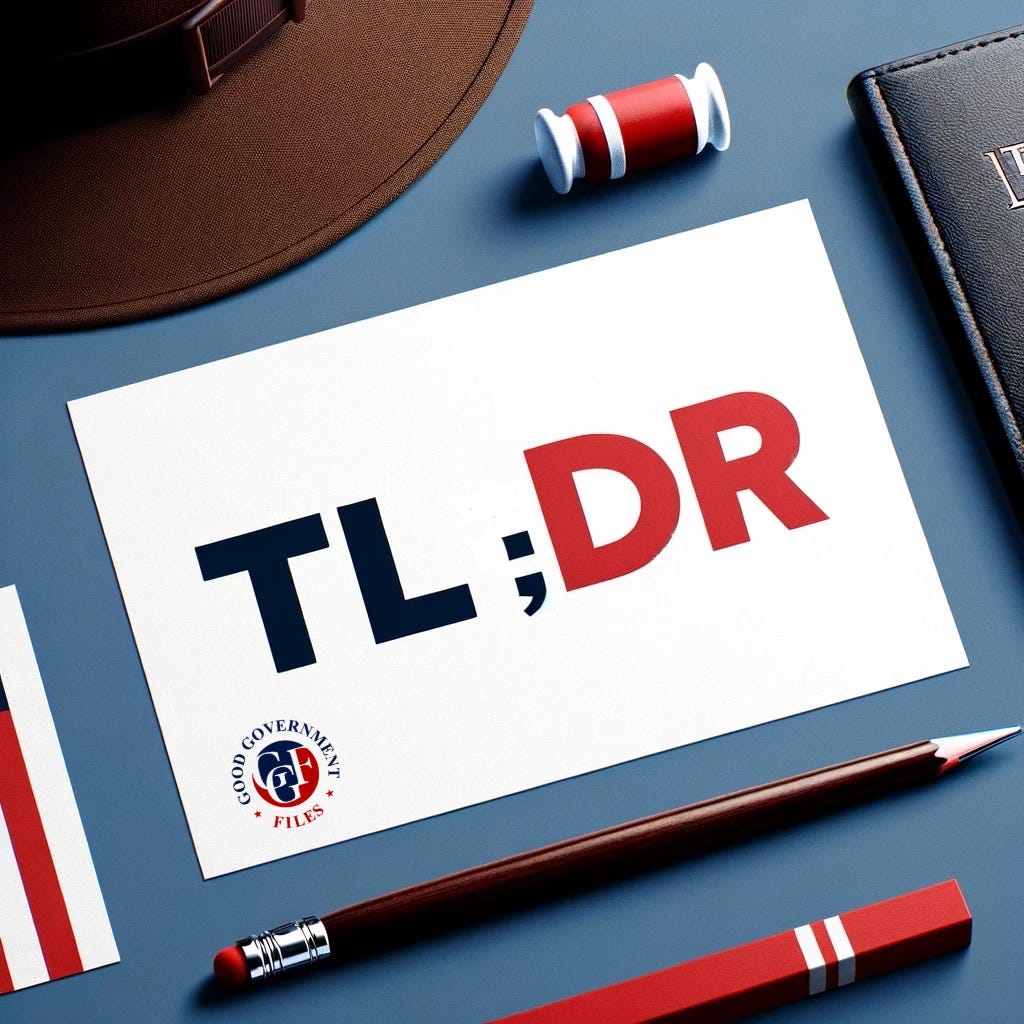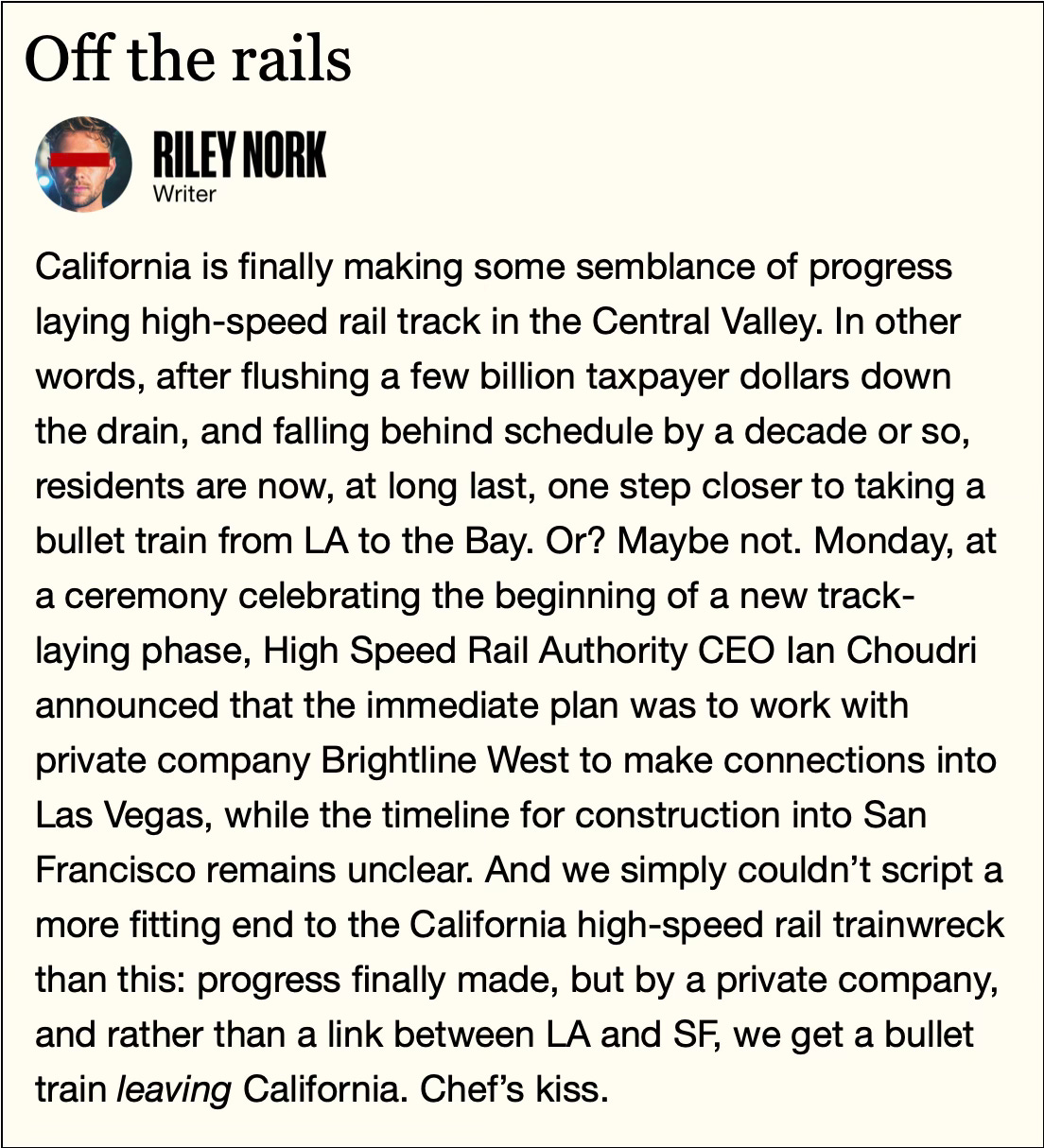Join Up or Break Down
Two essential reads on restoring community and the vital role of local governments
Dear Readers,
This week’s TL;dr brings you two essential pieces on the intersection of isolation, connection, and governance. As always, I’m experimenting with how best to deliver insights that matter most to you — your feedback is welcome!
The first, The Anti-Social Century by Derek Thompson, explores the growing isolation of Americans and how it’s fraying our civic bonds. It’s a deep dive into how technology, cultural shifts, and our own habits are reshaping our ability to connect with neighbors, participate in public life, and even tolerate opposing viewpoints.
The second, the documentary Join or Die, brings Robert Putnam’s seminal work on social capital to life. It’s a powerful reminder the small, everyday act of joining a group — be it a bowling league or the Lions Club — has a profound impact on our democracy. With Trump’s election signaling an unmistakable vibe shift in the political landscape, Putnam’s findings offer a roadmap for rebuilding the connections that sustain representative government.
These pieces are vital for local government professionals because they address the core of what we do: build stronger communities. The summaries below provide key insights, but both are worth your full attention.
Let’s get started.
Will
The Anti-Social Century
Thompson examines America’s growing embrace of solitude, exploring how fewer in-person connections are reshaping our society. He walks readers through the history of how we arrived at the current moment, when restaurant bars have turned into silent hubs for takeout orders, homebound living has become the norm, and social disconnection is eroding not just personal happiness but democracy itself. Thompson outlines how modern technology, suburban sprawl, and the rise of remote work have built a culture optimized for convenience but deprived of meaningful community. The result? Isolation is rewiring our civic identity, with “the middle ring” of community — neighbors, acquaintances, and local networks — fading fast.
I’ll share a couple of key excerpts. The first notes this isn’t just a post-election hot take.
Over the past few months, I’ve spoken with psychologists, political scientists, sociologists, and technologists about America’s anti-social streak. Although the particulars of these conversations differed, a theme emerged: The individual preference for solitude, scaled up across society and exercised repeatedly over time, is rewiring America’s civic and psychic identity. And the consequences are far-reaching—for our happiness, our communities, our politics, and even our understanding of reality.
The second excerpt underscores a critical point for local government officials, or, village builders, if you will: the importance of gathering in person to see our “opponents” not as abstractions, but as fully formed human beings with aspirations remarkably similar to our own. This idea, rooted in the work of Marc J. Dunkelman, a research fellow at Brown University, highlights how face-to-face interactions can foster tolerance, build understanding, and transform division into coexistence.
Families teach us love, and tribes teach us loyalty. The village teaches us tolerance. Imagine that a local parent disagrees with you about affirmative action at a PTA meeting. Online, you might write him off as a political opponent who deserves your scorn. But in a school gym full of neighbors, you bite your tongue. As the year rolls on, you discover that your daughters are in the same dance class. At pickup, you swap stories about caring for aging relatives. Although your differences don’t disappear, they’re folded into a peaceful coexistence. And when the two of you sign up for a committee to draft a diversity statement for the school, you find that you can accommodate each other’s opposing views. “It’s politically moderating to meet thoughtful people in the real world who disagree with you,” Dunkelman said. But if PTA meetings are still frequently held in person, many other opportunities to meet and understand one’s neighbors are becoming a thing of the past. “An important implication of the death of the middle ring is that if you have no appreciation for why the other side has their narrative, you’ll want your own side to fight them without compromise.”
The village is our best arena for practicing productive disagreement and compromise—in other words, democracy. So it’s no surprise that the erosion of the village has coincided with the emergence of a grotesque style of politics, in which every election feels like an existential quest to vanquish an intramural enemy.
While Thompson’s piece paints a bleak picture, it also highlights opportunities for revival. Board game cafés, local bookstores, and even bans on school smartphones show glimmers of a countertrend. The challenge for governments? Build places that foster connection — playgrounds, libraries, even sidewalks — and champion rituals that restore the middle ring. In a century of solitude, reconnection could be the most radical act of governance.
Join or Die
What makes democracy work? Why is American democracy in crisis? And most importantly, what can we do about it? These urgent questions guide Join or Die, a documentary that brings Harvard Kennedy School professor Robert Putnam’s trailblazing social science research to life. Directed by Pete and Rebecca Davis, the film explores how America’s declining community connections — what Putnam calls “social capital” — have weakened our democratic institutions. With a blend of historical footage, contemporary examples, and expert voices, the film distills Putnam’s decades of work into an inspiring call to action: to save democracy, we need to join up.
The documentary highlights the roots of our civic unraveling, from the decline of bowling leagues to the rise of rugged individualism. But it’s not all doom and gloom. Putnam and the film spotlight groups working to rebuild the social fabric, proving that vibrant democracy starts with connection. Whether it’s that local PTA meeting or the Lions Club, these examples remind us strong communities demand more from their governments — and each other.
Here’s the trailer for Join or Die, currently available on Netflix.
Join or Die feels like a wake-up call wrapped in a roadmap. Its message is resonating with the public: it’s got a 95% score on Rotten Tomatoes. For local governments, this ought to serve as a challenge. How can you create spaces and opportunities that bring people together? Parks, libraries, neighborhood councils — these aren’t just amenities; they’re democracy’s infrastructure. The film’s message is clear: when people connect, they organize. When they organize, they create change. And when they create change, they make democracy work. The first step? Show up.
Also Worth Your Time
We continue to experiment with what works for TL;dr. I recognize another email in your life can be a mixed blessing. The good news is I’ve got the time to find content that’s truly meaningful to people interested in governing well; the not-so-good news is you’ve already got a TON of work-related emails to plough through. So, I’m going to share only what I consider the best of the best of my trawling for gov (and gov-related) goodness.
When it comes to renaming Alaska’s landmarks, locals have one simple rule: ask first. Trump’s decision to rename Denali back to Mount McKinley has Alaskans scratching their heads and rolling their eyes. While the mountain looms large in America’s culture wars, locals just want to know why they weren’t consulted. “I think, actually, many Alaskans will resent it, because there’s no reason for the name change,” a resident said. “I don’t think this is a we-couldn’t-care-less thing. We don’t like people renaming our mountains without consulting us.” With signs, maps, and traditions already tied to Denali, most Alaskans — and even the state’s Republican senators — aren’t planning to switch names anytime soon.
California’s high-speed rail: billions spent, years delayed, and the first bullet train heads … to Vegas. Perfect. In a previous GGF on the challenge of implementing big, hairy projects, we shared Pirate Wires reporting on the epically mismanaged mess that is the voter-approved, $33 billion bullet train that’s supposed to connect Los Angeles to San Francisco. Here’s the latest, as shared in a recent Pirate Wires Morning Take.
Thanks for reading! As I continue to rethink and refine TL;dr to make it as valuable as possible, let me know what resonates or what you’d like to see more of.
Onward and Upward.





